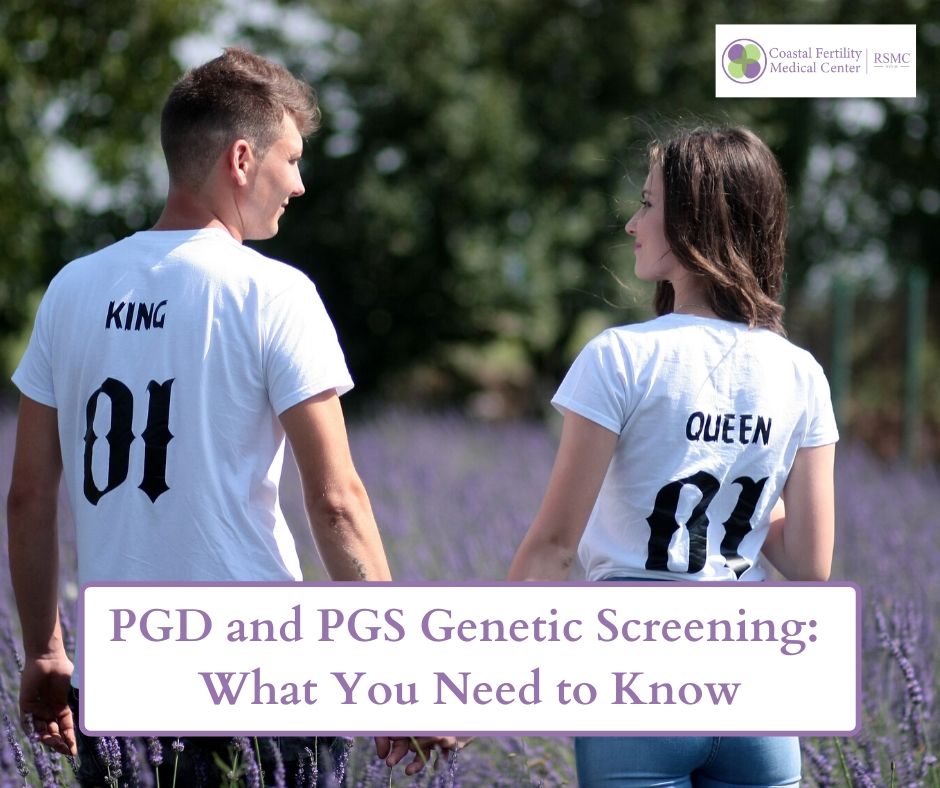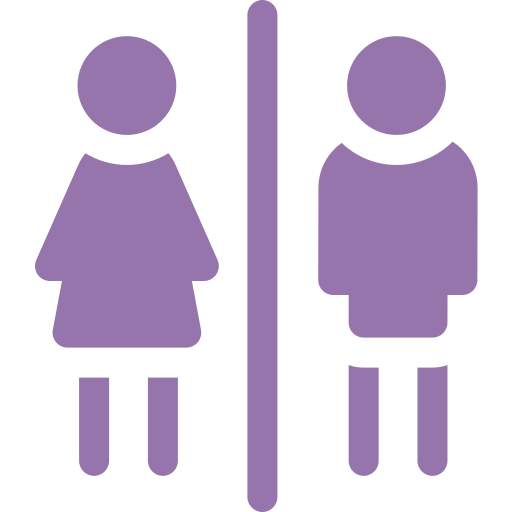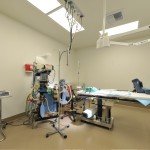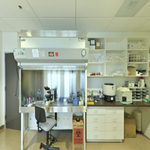About
Success
Treatment
Financial
Resources
Blog
Contact
Site Tools

PGD and PGS Genetic Screening: What You Need to Know

Genetic screening technologies, such as PGD and PGS testing, are useful in detecting genetic disorders in embryos formed through IVF treatment before pregnancy. When combined with IVF, these procedures can help lower the risk of transferring severe genetic diseases. Additionally, it can reduce the risk of multiple miscarriages and raise the odds of a successful pregnancy. The acronyms PGS and PGD may be used interchangeably. However, they are quite different when it comes to why and how they are performed.
In this article, we will look into the meaning of PGD and PGS, how they differ from prenatal testing. We will also discuss the possible reasons why fertility doctors may recommend these preimplantation genetic testing technologies.
What Is PGD?
PGD is short for “Preimplantation Genetic Diagnosis”. It takes place to check for the presence of a certain genetic disorder in an embryo. You may also require this technique to prevent transferring a genetic disorder to an offspring. Moreover, it can also be useful to select a certain genetic tendency. Both are needed in some cases. For instance, when a couple intends to conceive a baby who can be a match for a relative’s bone marrow transplant but also intends to avoid transferring the gene responsible for the disease requiring the transplant.
It is important to know that PGD doesn’t screen an embryo for all genetic diseases. For instance, if an embryo doesn’t seem to possess the gene for cystic fibrosis, that tells you nothing about other possible genetic diseases that may be present. It only assures you that cystic fibrous is very unlikely.
What Is PGS?
PGS is an acronym for “Preimplantation Genetic Screening”. Unlike PGD, it does not check for particular genes but the entire genetic makeup of an embryo. Embryos can be categorized as being aneuploidy or euploidy. Normally, the female egg contributes 23 chromosomes, while the sperm also contributes 23. With this, they produce a healthy embryo having 46 chromosomes. This is known as an euploid embryo.
If the embryos formed are missing a chromosome or has an extra one – we refer to it as aneuploidy. Aneuploidy embryos are at higher risk of failing to implant or resulting in miscarriage. If implantation, conception, and birth manage to occur, aneuploidy embryos can result in a baby with physical or mental disabilities.
Comprehensive Chromosome Screening (CCS) is a PGS technique that can be used to find out if an embryo is XY (male) or XX (female) while going through IVF treatment. Fertility specialists also perform the test to prevent a genetic disorder associated with a particular gender or (in rare cases) to “balance” a family.
Are Prenatal Testing and PGD/PGS Different?
Both PGS and PGD are done before implantation, unlike prenatal testing that is carried out after implantation has taken place.
People who decide to keep the pregnancy worry about what to expect at birth. Aside from worrying about having a baby with permanent disabilities, they also have a higher risk of stillbirth. Those who choose to abort the pregnancy face immense grief, guilt, as well as the pain and recovery of pregnancy termination.
Additionally, some people are against abortion because of their religion or morals. However, they feel okay with genetic screening before embryo transfer occurs. Having said that, PGS and PGD are not 100% certain. Many doctors suggest that Intended Parents undergo prenatal testing along with PGS or PGD, just in case a genetic diagnosis was missed or mistaken.
Reasons for PGD with IVF
Below are some of the reasons your physician may recommend doing PGD (or reasons why you may ask for it).
1. To prevent the transfer of a particular genetic disease that many members of the family have.
This is the most common reason for PGD. Based on whether a genetic disorder is recessive or dominant, the risk of transferring the disease to a baby is between 25-50 percent. In some instances, a couple may not require IVF treatment to conceive, and may not be dealing with infertility. PGD testing may be their sole reason for pursuing IVF treatment.
As we have said earlier, prenatal testing can also screen for genetic disorders. It comes without the risks, costs, and expenses of IVF treatment. However, the only option after prenatal testing is pregnancy termination (or keeping the pregnancy). Thus, this is not acceptable to some individuals.
2. To check for chromosomal translocation or rearrangement.
While some people have all the 46 chromosomes at birth, one or more of these chromosomes are not in the right position. These people may seem healthy from outside. However, they have a higher risk of struggling to conceive. They are prone to having a pregnancy that results in stillbirth or miscarriage or having a baby with a chromosomal disorder. For people whose partner has a chromosomal translocation, Preimplantation Genetic Diagnosis (PGD) can help detect embryos that are more likely to be healthy.
3. For HLA (Human Leukocyte Antigen) matching for bone marrow transplant.
The sole cure for some blood disease is a stem-cell transplant. A stem-cell match is not always easy to find within a family. However, one can undergo PGD to select an embryo that would be an HLA match (stem-cell match). As a result, It can help to avoid transferring that particular disease that’s affecting the sibling.
If an embryo that is both a pregnancy and an HLA match can be identified and healthy birth occurs, the stem cells required to save the sibling’s life can be obtained from the blood of umbilical blood at birth.
4. To prevent the transfer of a genetic predisposition of an adult-onset disorder.
A more controversial use of Preimplantation Genetic Disorder test is to avoid the transfer of genetic tendencies that can cause disease in the future. For example, fertility specialists can perform PGD to check for the BRCA-1 variant (the breast cancer gene) in embryos. Intended Parents can also follow it for Huntington disease and early-stage Alzheimer’s disease.
Reasons for General Genetic Screening (PGS or CCS) With IVF
Below are common reasons why PGS testing may be used with IVF treatment procedure:
1. To raise the success chances with elective single embryo transfer (eSET).
Several studies have indicated that PGS can help increase the likelihood of pregnancy and lower the risk of having a miscarriage when opting for elective single embryo transfer.
During elective single embryo transfer, the doctor will transfer only one healthy-looking embryo into the womb of the IVF Patient. This is an alternative to two embryo transfer, in which two embryos are transferred at the same time. While the latter technique raised the chances of success, it also comes with the risk of multiple pregnancies. This can pose risks to the health of the babies as well as their mothers.
2. To determine genetic gender.
Often used when a certain genetic disorder is gender-specific as PGS can help find out whether an embryo is male or female. This may be a slightly cheaper way to avoid a genetic disorder than the cost of PGD.
However, PGS can also help a couple have a baby of a particular gender when they are hoping to “balance” their family. Let’s say they already have a girl and now want a boy or vice versa.
3. To lower the risk of miscarriage in patients with a history of repeated pregnancy loss.
Miscarriage is a common occurrence, taking place in 1 out of 4 pregnancies. However, recurrent pregnancies, where the woman has more than two pregnancy losses repeatedly – is not. Preimplantation Genetic Screening test can help lower the chances of another miscarriage.
Note: For Couples whose miscarriages are unconnected to a particular genetic predisposition for pregnancy loss, it is not clear whether IVF treatment process with PGS testing can improve the odds of a live birth more than continuing to conceive naturally would. While the risk of having a miscarriage may be lower, a healthy pregnancy and live birth may not take place any sooner.
4. To increase the chances of pregnancy success for patients undergoing IVF.
Some doctors may recommend PGS together with IVF to raise the chances of success for women of advanced maternal age, Couples with a history of repeated IVF implantation failure, or in case of serious male factor infertility. Some fertility clinics perform PGS with IVF for all Patients.
Conclusion
Only you and your physician can decide whether IVF with PGS or PGD is right for you. Before making a decision, it is important that you know the possible risks, the costs, the reason why your doctor is recommending this assisted reproductive technology.
Interested in preimplantation genetic testing and don’t know where to start? We can help you evaluate your risks and chances and help decide whether any preimplantation genetic testing will be needed for your family building journey. Please schedule a consultation or visit us at www.CoastalFertility.com.
Related Post
-
What is Azoospermia – Types, Causes, Symptoms, and Treatments
-
15 Things Doctors Want Women in Their 30s to Know About Their Fertility
-
Ovarian Hyperstimulation Syndrome (OHSS) – Causes, Risks, and Treatments
-
This IVF Pregnancy Success Video Is Going Viral On TikTok, And It’s The Most Adorable Announcement
-
End your week with these happy and heartwarming stories and videos
-
Fertility clinic shares IVF pregnancy success with parents-to-be in adorable video
Halloween 2019
Each year, Coastal Fertility Medical Center’s staff hosts a fun get together for our former patients and their families. View more photos from our 28th annual Miracle Babies Halloween event!Popular Searches
- Orange County Fertility Clinic
- Irvine, California Fertility Center
- Coastal Fertility Medical Center
- Free Fertility Seminar, Irvine CA
- In Vitro Fertilization and ICSI
- Best Orange County Infertility Doctor
- Southern California Fertility Specialist
- PGD, PGS Orange County
- Egg Donation and Surrogacy
Address
Coastal Fertility Medical Center15500 Sand Canyon Avenue
Suite 100
Irvine, CA 92618
©2024 | Sitemap | HIPAA/Privacy | Disclaimer and Privacy Policy
News from our Top Doctors

Our fertility clinic focuses on helping you build your family regardless of your sexual orientation or the gender you choose to identify with. We are even taking further steps to make LGTB people feel more welcome at our fertility clinic. Each of our patient-facing staff goes through LGTB training to let family-building clinicians provide necessary support and make you feel highly welcome.

Coastal Fertility Medical Center offers one of the most advanced fertility treatments and is completely transparent regarding the costs of procedures and any other expenses that you may have to pay before commencing your treatment. This differentiates us from some fertility clinics that reduce prices before the signing of the contract but charge you extra later on. We make sure our patients are well aware of any possible extra pricing that may occur over the course of their treatment.

The infertility industry is currently segmented, with each service or treatment being handled by a different provider. Our all-inclusive model simplifies an otherwise complex and difficult process. We are here to revolutionize the infertility industry by offering a one-stop-service model to assist our patients through infertility challenges while reducing physical, emotional, and financial risks.

Our globally respected team of specialists are helping improve IVF technologies to enter into a generation of better outcomes for infertility. Although you’ll have a doctor guiding you, you are also going to benefit from the experience and insights of other doctors during case review collaboration meetings, which take place every week. So, you won’t just rely on the expertise of a specialist but benefit from the knowledge of many reputed fertility experts.

Our team specializes in difficult cases and help patients who may have been considered “hopeless” at other fertility clinics. Thanks to our personalized solutions, expertise, and internal collaboration, weare able to maximize pregnancy success rates that are well above the industry average, even in difficult infertility cases.

We know that every situation is different and that everyone requires different treatments. Unlike facilities that take “a one-size-fits-all” approach for all cases, our fertility specialists use more than 40 customized protocols to raise the chances of success. The customized approach even extends to our fertility laboratory. Our on-site lab director and his highly-experienced team nurture every embryo and egg to increase the odds of success of each cycle.

Coastal Fertility Medical Center offers one of the most advanced fertility treatments and is completely transparent regarding the costs of procedures and any other expenses that you may have to pay before commencing your treatment. This differentiates us from some fertility clinics that reduce prices before the signing of the contract but charge you extra later on. We make sure our patients are well aware of any possible extra pricing that may occur over the course of their treatment.
Thanks for Joining!
We will be sending new updates soon.
You’re all set!
Your new patient forms have been submitted and received. We look forward to seeing you at your appointment.
Send us a message, we’ll be happy to answer any questions!
Please complete the form so we can best serve and help you with your journey towards parenthood.
On Demand Seminar Registration
Following the Preimplantation Genetic Screening process, which helps ensure there are normal chromosome numbers and detects possible genetic disorders, the most healthy embryo(s) are selected to be implanted into your or your chosen surrogate’s womb. 2 weeks after the transfer of the embryo, your physician will conduct a final blood test to determine the level of hCG (human chorionic gonadotropin) in your body. Increased hCG levels usually indicate a positive pregnancy test.

For fertilization to take place, the collected egg and sperm are combined in a petri dish and cultured in an embryo incubator. This dish is closely watched to check whether any of the eggs have been fertilized. Once the egg is fertilized, it is referred to as an embryo or a blastocyst on the 5th day of development. Our in-house embryologist carefully nurtures every embryo to the right time, even if it means working outside the standard business operating hours. For instance: If an oocyte is not mature, our laboratory will wait for it to mature and then ICSI it at the right time.

The egg retrieval is a slightly invasive medical procedure that takes about 20 to 30 minutes. You will be given an anesthetic to make you sleep for the duration of the procedure. Using ultrasound technology, your doctor will harvest your eggs transvaginally with a small, hollow needle connected to an ultrasound probe. Once your eggs are collected, your partner’s semen or donor sperm you have pre-selected is used for fertilization. The sperm are washed and prepared, and the top-quality sperm extracted is used to fertilize the eggs.

Your doctor will create a customized medication schedule that contains information about the fertility medications and hormone injections you have to take. Medication and injections are taken to encourage your ovaries to mature a large number of eggs for fertilization. Since women don’t respond to fertility drugs and hormones the same way, personalized protocols are crucial to the IVF cycle success. At Coastal Fertility, we will monitor you closely, letting you understand the changes occurring in your body and keeping track of how your egg follicles are growing.

On-site consultations typicallyinclude a standard fertility evaluation, consisting of a physical examination, complementary follicular ultrasound, and testing to enable your doctor to know your present fertility status and draw up a treatment plan.

This consultation includes a detailed medical evaluation with a doctor. You and your physician will review your health records and have enough time to talk about your goals and get answers to your questions. We recommend that you jot down all your questions before the visit to allow you to make the best use of the time spent with your doctor.

Your Reproductive Endocrinologist will take all factors into consideration and create a comprehensive plan of care, otherwise known as the treatment plan. This plan will include treatment recommendations from the physician and enable your financial coordinator to make a precise quotation once you meet.

Our globally respected team of specialists are helping improve IVF technologies to enter into a generation of better outcomes for infertility. Although you’ll have a doctor guiding you, you are also going to benefit from the experience and insights of other doctors during case review collaboration meetings, which take place every week. So, you won’t just rely on the expertise of a specialist but benefit from the knowledge of many reputed fertility experts.

The infertility industry is currently segmented, with each service or treatment being handled by a different provider. Our all-inclusive model simplifies an otherwise complex and difficult process. We are here to revolutionize the infertility industry by offering a one-stop-service model to assist our patients through infertility challenges while reducing physical, emotional, and financial risks.

Our fertility clinic focuses on helping you build your family regardless of your sexual orientation or the gender you choose to identify with. We are even taking further steps to make LGTB people feel more welcome at our fertility clinic. Each of our patient-facing staff goes through LGTB training to let family-building clinicians provide necessary support and make you feel highly welcome.

We know that every situation is different and that everyone requires different treatments. Unlike facilities that take “a one-size-fits-all” approach for all cases, our fertility specialists use more than 40 customized protocols to raise the chances of success. The customized approach even extends to our fertility laboratory. Our on-site lab director and his highly-experienced team nurture every embryo and egg to increase the odds of success of each cycle.

Our team specializes in difficult cases and help patients who may have been considered “hopeless” at other fertility clinics. Thanks to our personalized solutions, expertise, and internal collaboration, weare able to maximize pregnancy success rates that are well above the industry average, even in difficult infertility cases.

Upon your arrival, you will check in with a Patient Care Coordinator. We will obtain your insurance information for benefits verification, a copy of your identification and take a picture for your electronic medical chart
Welcome to Coastal Fertility Family
Coastal Fertility is the leading provider of fertility solutions located in Orange County. Join us to get free updates on fertility news, treatments, infertility solutions and more.
Welcome to Coastal Fertility Family
Coastal Fertility is the leading provider of fertility solutions located in Orange County. Join us to get free updates on fertility news, treatments, infertility solutions and more.





































